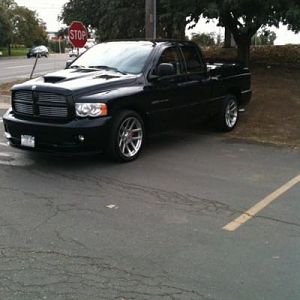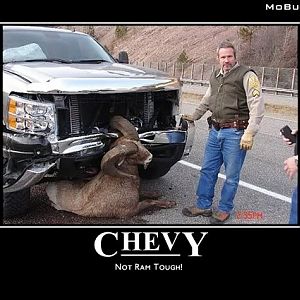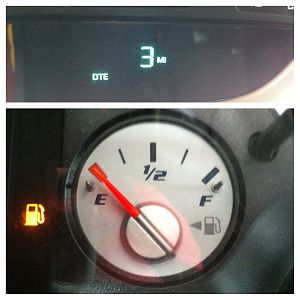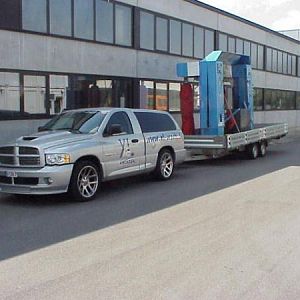.. how do these Top Fuel's get to the 8000 hp range? and we have serious trouble getting to 1000
You are using an out of date browser. It may not display this or other websites correctly.
You should upgrade or use an alternative browser.
You should upgrade or use an alternative browser.
8000hp + .. how do these Top Fuel's get to the 8000 hp range?
- Thread starter SRT10VENOMOUS
- Start date
nycstev
Full Access Member
SRT10VENOMOUS said:.. how do these Top Fuel's get to the 8000 hp range? and we have serious trouble getting to 1000
Plenty of $$$$$$$$$$$$$$$$!
yaya but whats the theory or how it works ;-)
RatMotor
Full Access Member
Nitromethane, insane amounts of boost, and the engine only has to live for a few seconds.
I read somewhere a stock 426 hemi couldn't even turn the supercharger on a top fuel car.
I read somewhere a stock 426 hemi couldn't even turn the supercharger on a top fuel car.
The trick is to force 1+ gallons of nitro and 50+ #'s of boost into a 500" Hemi every second.
Goose
Full Access Member
I'm sure that I will be corrected if I'm wrong but Nitromethane contains oxygen making it possible to burn more fuel. instead of the standard 14.7 to 1 ratio that most vehicles run at....... Sooo instead of needing 14.7 pounds of air to burn one pound of gasoline, nitromethane needs only 1.7 pounds of air to burn one pound of nirtomethane. To put it into perspective a top-fuel car will burn close to a gallon of nitromethane per second.
V10 BULLET
New Member
Actually the engines don't burn it all. Thats why they run 2 magneto's,2 plugs in every cylinder.The fire you see coming out of the headers is the slow burning nitromethane. Its called secondary decompisition.A while back Kenny Burnstein built some engines that had 3 ignitions to take advantage of this secondary decomposition,it had 3 mags and the 3rd plug was located very near the hedder tube.
One Top Fuel dragster 500 cubic inch Hemi engine makes more horsepower than the first 4 rows at the Daytona 500.
Under full throttle, a Top Fuel dragster engine consumes 11.2 gallons of nitro methane per second; a fully loaded 747 consumes jet fuel at the same rate with 25% less energy being produced.
A stock Dodge 426 Hemi V8 engine cannot produce enough power to drive the dragster's supercharger.
With 3000 CFM of air being rammed in by the supercharger on overdrive, the fuel mixture is compressed into a near-solid form before ignition. Cylinders run on the verge of hydraulic lock at full throttle.
At the stoichiometric 1.7:1 air/fuel mixture for nitro methane the flame front temperature measures 7050 degrees F ( 3900 degrees C ).
Nitromethane burns yellow. The spectacular white flame seen above the stacks at night is raw burning hydrogen, dissociated from atmospheric water vapour by the searing exhaust gases.
Dual magnetos supply 44 amps to each spark plug. This is the output of an arc welder in each cylinder.
Spark plug electrodes are totally consumed during a pass. After 1/2 way, the engine is dieseling from compression plus the glow of exhaust valves at 1400 degrees F. The engine can only be shut down by cutting the fuel flow.
If spark momentarily fails early in the run, unburned nitro builds up in the affected cylinders and then explodes with sufficient force to blow cylinder heads off the block in pieces or split the block in half.
In order to exceed 300 mph in 4.5 seconds dragsters must accelerate at an average of over 4G's. In order to reach 200 mph well before half-track, the launch acceleration approaches 8G's.
Dragsters reach over 300 miles per hour before you have completed reading this sentence.
Top Fuel Engines turn approximately 540 RPM's from light to light! but stop & ponder the fact that the engine is only used for apx 4 to 5 seconds.
Including the burnout the engine must only survive 900 revolutions under load.
The red-line is actually quite high at 9500 rpm.
The Bottom Line; Assuming all the equipment is paid off, the crew worked for free, and for once NOTHING BLOWS UP, each run costs an estimated $1,000.00 per second. The current Top Fuel dragster elapsed time record is 4.441 seconds for the quarter mile 10/05/03, (Tony Shumacher). The top speed record is 333.00 mph (533 km/h) as measured over the last 66' of the run (09/28/03 Doug Kalitta).
Putting all of this into perspective: You are riding the average $25,000 Honda MotoGP bike. Over a mile up the road, a Top Fuel dragster is staged and ready to launch down a quarter mile strip as you pass. You have the advantage of a flying start. You run the RC211V hard up through the gears and blast across the starting line and past the dragster at an honest 200 mph (293 ft/sec). The tree' goes green for both of you at that moment. The dragster launches and starts after you. You keep your wrist cranked hard, but you hear an incredibly brutal whine that sears your eardrums and within 3 seconds the dragster catches and passes you. He beats you to the finish line, a quarter mile away from where you just passed him. Think about it, from a standing start, the dragster had spotted you 200 mph and not only caught, but nearly blasted you off the road when he passed you within a mere 1320 foot long race course.
That, folks, is acceleration.
Under full throttle, a Top Fuel dragster engine consumes 11.2 gallons of nitro methane per second; a fully loaded 747 consumes jet fuel at the same rate with 25% less energy being produced.
A stock Dodge 426 Hemi V8 engine cannot produce enough power to drive the dragster's supercharger.
With 3000 CFM of air being rammed in by the supercharger on overdrive, the fuel mixture is compressed into a near-solid form before ignition. Cylinders run on the verge of hydraulic lock at full throttle.
At the stoichiometric 1.7:1 air/fuel mixture for nitro methane the flame front temperature measures 7050 degrees F ( 3900 degrees C ).
Nitromethane burns yellow. The spectacular white flame seen above the stacks at night is raw burning hydrogen, dissociated from atmospheric water vapour by the searing exhaust gases.
Dual magnetos supply 44 amps to each spark plug. This is the output of an arc welder in each cylinder.
Spark plug electrodes are totally consumed during a pass. After 1/2 way, the engine is dieseling from compression plus the glow of exhaust valves at 1400 degrees F. The engine can only be shut down by cutting the fuel flow.
If spark momentarily fails early in the run, unburned nitro builds up in the affected cylinders and then explodes with sufficient force to blow cylinder heads off the block in pieces or split the block in half.
In order to exceed 300 mph in 4.5 seconds dragsters must accelerate at an average of over 4G's. In order to reach 200 mph well before half-track, the launch acceleration approaches 8G's.
Dragsters reach over 300 miles per hour before you have completed reading this sentence.
Top Fuel Engines turn approximately 540 RPM's from light to light! but stop & ponder the fact that the engine is only used for apx 4 to 5 seconds.
Including the burnout the engine must only survive 900 revolutions under load.
The red-line is actually quite high at 9500 rpm.
The Bottom Line; Assuming all the equipment is paid off, the crew worked for free, and for once NOTHING BLOWS UP, each run costs an estimated $1,000.00 per second. The current Top Fuel dragster elapsed time record is 4.441 seconds for the quarter mile 10/05/03, (Tony Shumacher). The top speed record is 333.00 mph (533 km/h) as measured over the last 66' of the run (09/28/03 Doug Kalitta).
Putting all of this into perspective: You are riding the average $25,000 Honda MotoGP bike. Over a mile up the road, a Top Fuel dragster is staged and ready to launch down a quarter mile strip as you pass. You have the advantage of a flying start. You run the RC211V hard up through the gears and blast across the starting line and past the dragster at an honest 200 mph (293 ft/sec). The tree' goes green for both of you at that moment. The dragster launches and starts after you. You keep your wrist cranked hard, but you hear an incredibly brutal whine that sears your eardrums and within 3 seconds the dragster catches and passes you. He beats you to the finish line, a quarter mile away from where you just passed him. Think about it, from a standing start, the dragster had spotted you 200 mph and not only caught, but nearly blasted you off the road when he passed you within a mere 1320 foot long race course.
That, folks, is acceleration.
V10 BULLET said:Actually the engines don't burn it all. Thats why they run 2 magneto's,2 plugs in every cylinder.The fire you see coming out of the headers is the slow burning nitromethane. Its called secondary decompisition.A while back Kenny Burnstein built some engines that had 3 ignitions to take advantage of this secondary decomposition,it had 3 mags and the 3rd plug was located very near the hedder tube.
You need to explain that one a little better. It really does not make sense.
nycstev
Full Access Member
Wow! I had no clue!
I thought the flame was hydrogen burning (thats why it's that cool color), the exaust gasses are so hot they cause a chemical reaction as soon as it contacts humidity.....Silverback said:You need to explain that one a little better. It really does not make sense.
mopower1958
Full Access Member
- Joined
- May 20, 2006
- Messages
- 2,482
- Reaction score
- 0
SRT10VENOMOUS said:.. how do these Top Fuel's get to the 8000 hp range? and we have serious trouble getting to 1000
Picture a shower nozzle spraying fuel into each cylinder, and how muck air and ignition it would take to burn that much fuel. That is how they do it. If you have never seen a fuel car run in person you need to experience it. Nascar has nothing on the NHRA!!
RatMotor
Full Access Member
mopower1958 said:Picture a shower nozzle spraying fuel into each cylinder, and how muck air and ignition it would take to burn that much fuel. That is how they do it. If you have never seen a fuel car run in person you need to experience it. Nascar has nothing on the NHRA!!
It's more like a fire hydrant. They have a working fuel pump and injector display at the NHRA museum at the Pomona dragstrip. The volume of fluid is insane.
Ram From Hell
Full Access Member
BigRed460 said:If spark momentarily fails early in the run, unburned nitro builds up in the affected cylinders and then explodes with sufficient force to blow cylinder heads off the block in pieces or split the block in half.
How early? :dontknow:
I've seen plenty of passes where a cylinder fails to ignite at various points on the pass, and the worst that I've seen happen is the extra power the engine makes when it finally ignites causes the tires to go up in smoke, since the clutch has already fully engaged.
bigike
Full Access Member
the exhaust creates 6,000 pounds of down force.
The get a engine to run at 8,000 hp for a year +, 24/7 this is what it looks like.

The get a engine to run at 8,000 hp for a year +, 24/7 this is what it looks like.

bigike
Full Access Member
15,000 the smallest Colt Peilstick 4.2.

It's a v10, and doesnt sound like a ricer!

It's a v10, and doesnt sound like a ricer!
bigike
Full Access Member

This is my ALL TIME FAVORITE ENGINE. THE FAIRBANKS MORSE OP. It has 2 crankshafts and NO VALVES AT ALL. I love overhauling this girl and cry to think that I quit that job.....................
She lays down 4,500 Hp at 900 Rpms
Ram From Hell said:How early? :dontknow:
I've seen plenty of passes where a cylinder fails to ignite at various points on the pass, and the worst that I've seen happen is the extra power the engine makes when it finally ignites causes the tires to go up in smoke, since the clutch has already fully engaged.
NHRA Crashes
watch all the ones that blow, yea some of them run just fine, but most go boom if a cylinder is lost in thef irst part of a run....
Last edited:
Black1
Full Access Member
Very cool and interesting.... I always wondered this myself. 
Great post Bigred.
Let us not forget that they tear down that engine and rebuild it after each run!!!! Now thats maitenence I dont want!! LOL
patrick
Let us not forget that they tear down that engine and rebuild it after each run!!!! Now thats maitenence I dont want!! LOL
patrick
Support Us
Become A Supporting Member Today!





